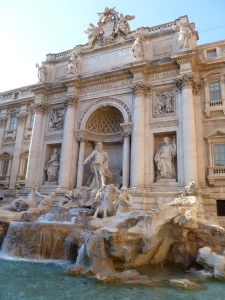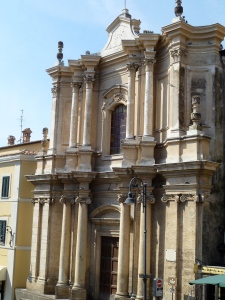Baroque Architecture
Baroque architecture began in Italy in the early 17th century and follows the period of Renaissance architecture. This style draws on the Renaissance form, but uses it in a new way to show drama with new light and shadow techniques and to express the triumph of the Catholic Church. Baroque was linked to the Catholic churches of the Counter-Reformation. This style represents the wealth and power of the church and expresses this with grand embellishments and detail. Key characteristics of Baroque architecture are curving facades, broken and curved pediments, pilasters, exaggerated keystones, curved plan forms such as ovals, dramatic use of light, use of color and ornaments (such as sculptures and scallop shells) and ceiling frescoes.
The Trevi Fountain is one of the most famous fountains in the world and is the larges Baroque fountain in Rome. It was finished in 1752 and features multiple sculptures, multi-story/giant Corinthean pilasters, rounded and triangular pediments, triumphal arch, and symmetry.
I found a perfect example of a Baroque church in Tarquinia, Italy in the center of town. It features an embellished, curving façade, pilasters, Ionic order columns, grand ornamentation, pedimented windows, and has an overall grand effect.
~ by nicoledenering on November 17, 2011.
Posted in Architecture, Baroque


